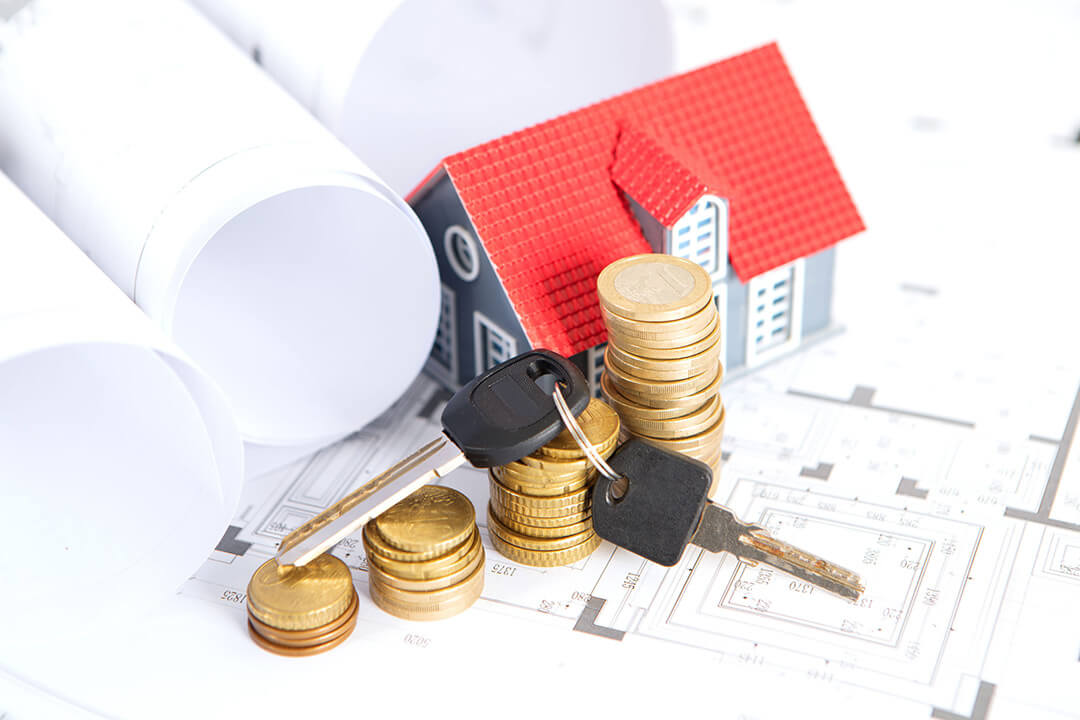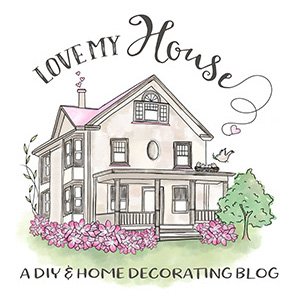
Show me the Money, or How to Pay for Home Improvement Projects
Money is a tricky subject because it’s personal. We don’t generally talk about money in polite (or otherwise) company 😉 .
But, finding the money – knowing how to pay for home improvement projects – is pretty darn important when you decide to make almost any changes to your home. Maybe you want money on a regular basis to spend on decor projects, or maybe you want to make over your bedroom. Maybe you’re considering a major kitchen remodel. In this post, I offer 6 alternatives to “show you the money,” whatever you’re considering.
I’ve used most of these alternatives at some point in my life. Hopefully one of these gems will help you support your own home improvement projects and ‘get ‘er done!’
 1. Save & Pay Cash
1. Save & Pay Cash
This is what we do.
It’s what we did for all the renovations over the past year. It’s also what we do every month (because I have an ongoing home improvement monthly budget line).
Regarding our renovation – we had been saving for a LONG time. And, when we retired and sold our business in 2016, that both brought in some money and drastically reduced our monthly expenses. So we had the money available. But, I carefully budgeted to make sure the money stretched as far as it could.
My Money Philosophy
If I don’t have it I don’t spend it. The only exception is that for large purchases, I do finance if there is zero interest and the payment fits into our monthly budget (see #5 below). I also technically use a reward card to pay for most things. However, I always pay the card off in full every month (see # 4 below).
A small disclaimer – I was not always so good with my finances. I have, in the past, abused my share of credit, lived to tell the tale and seen the light. When I divorced my son’s dad I became financially crippled for a while and that taught me that keeping things in line financially makes everything easier. Plus I got used to going without. Good financial management is especially important in retirement and on fixed incomes.
Budgeting
Not gonna lie, shopping can be fun but I don’t spend money lightly. So, I’m always looking for the best deal and I think long and hard before I buy anything. If you’re interested in my shopping tips, by the way, there’s a post for that – read all about it here. Making big purchases can be a little daunting. But, budgeting gave me the freedom to plan for and make large purchases without fear.
Budgeting and money management tools that I’ve found helpful:
Benefits / Detractions
The benefits of using cash are obvious, you don’t need to worry about finance charges. It’s also easier to stay within a budget if you are only spending money you already have. Unlike all the other options, it takes time and patience though. So you may have to wait a while before you can tackle that dream project.
 2. Home Equity Loan or Home Equity Line of Credit
2. Home Equity Loan or Home Equity Line of Credit
If you can afford the monthly payment, tapping into your home’s equity with either a loan or line of credit is a good option.
We chose this option when we sided our house and replaced all the windows and doors. We did not have the cash, did not want to refinance our first mortgage and did not want to wait years to fix a few issues that needed fixing right then. The only way to know for sure whether you have equity in your home is to have your house appraised (a good Real Estate Agent can help). If you want a rough idea, check out your home’s estimated value on Zillow.
Benefits / Detractions
The benefits a home equity loan or line of credit is that you can get a lump sum of money up-front and pay for it over time. So, you can make the renovations sooner rather than later.
This is a better alternative than refinancing your entire mortgage if you happen to have a great rate on your first mortgage and don’t want to lose it. Or if you just don’t want to go through re-mortgaging. You will need to make payments, so this option adds to your monthly expenses. And, a second mortgage or line of credit usually carries a higher interest rate than a first mortgage.
 3. Mortgage Refinance
3. Mortgage Refinance
This is a good option if the mortgage rate you are carrying is higher than current rates. If you have equity in your home, you can consider tapping into that equity to obtain a larger mortgage. You can then cover both your current mortgage and the cost to renovate.
Benefits / Detractions
If you’re going to save on interest (whether or not you take additional money out) this can be a really good option.
We have gone this route a few times. Like the home equity loan or line of credit, if you do tap the equity in your home you’ll get money up-front which allows you to take care of your renovations right away. If you are lowering your interest rate and/or extending the years you are mortgaging, it is possible that you won’t even increase your monthly payments.
Be aware that extending payments means you’re paying more money overall, though. This alternative can take significant effort and time, and you need to be careful that the fees to refinance don’t eliminate the benefit.
The thing to avoid is financing short-term gain with long-term debt. Meaning, don’t pay for something over a long period of time that will only help you in the short term. Interest rates and fees can really increase renovation costs. Therefore, this is a good alternative generally if you’re improving your home in ways that offer more long-term gain, improvements that add value to your home.
 4. Credit Cards
4. Credit Cards
If you have an immediate need and don’t have the cash up-front, this is an alternative, provided you pay off the card quickly.
Benefits / Detractions
I’m a BIG fan of reward cards. BIG fan!
If you use one to charge your renovations, you can rack up a lot of reward points. We actually use a reward card for many of our monthly expenses, and we used it to charge our renovations whenever possible, but we ALWAYS paid it off in full every month. Last year reward points allowed us to take the 2 of us and 4 additional family members on a 2-day mini vacation in the White Mountains. And a spa day & night for 4 of us on a separate occasion.
The obvious caution about credit cards is that they usually come with a higher interest rate than any other form of financing. So, not paying off a credit card quickly can lead to extensive interest fees, and that is always money better spent elsewhere.
 5. Interest-Free Credit
5. Interest-Free Credit
In the past several years, this option is one offered by a lot of vendors. Heck, we used to offer interest-free financing in our own business.
This is a fabulous option as long as you can afford the monthly payment and pay it off in the allotted time. I’ve used this option for dental work (holy moly dental work can be expensive!) and for large furniture purchases.
Benefits / Detractions
Like a lot of the other options, you get to make a purchase up-front without having to save for it, you just don’t need to pay interest. Which I LOVE! I would honestly rather do this than pull money out of savings, if the money is earning interest where it is.
Be careful on these loans, though! If you miss even one payment or don’t pay the balance off completely within the timeframe allotted, you will generally be responsible for the full interest fee for the life of the loan. That can be huge. So I always put those payments on auto and make sure they are paid off completely well in advance.
 6. Personal Loans
6. Personal Loans
Personal loans are an alternative if you don’t want to or can’t use any of the other option (for instance if you don’t have much equity in your home). I’ve never had either the opportunity to use this alternative but I can see where it would be a good one under the right circumstances.
Benefits / Detractions
Interest rates are usually higher with personal loans than with home equity financing. There’s also a shorter time frame to repay the money, usually five to seven years. So your monthly payments could be larger. And, you do need sufficient credit and may need to use some form of collateral.
Summary
There are multiple ways to pay for that dream renovation or for any other improvement you want to make. What you choose entirely depends on your personal situation and your needs. I hope one of these alternatives show you how to pay for home improvement projects that may be on your own wish list.
Working on a tight budget? There’s still lots you can do! Click here for my post “How to Decorate like a Pro with Little or No Monday – 12 Ideas.”
For more information
- View my online shopping tips here.
- Working within a tight budget? Check out How to Decorate Like a Pro with Little or No Money
How about you?
Do you have a favorite renovation story? I’d love to hear about it. Please share in the comments below!

I’ve just started writing about this subject too. It’s something I’m passionate about. We also use the cash back cards. I earn quite a bit each year using them. Renovating without loans can take a lot of patience. We’ve been in our house for six years and there’s still so much to do.
This is such an important subject. I really need to write even more about it. It’s the number one issue that we all seem to have with getting things done around the house. If only we were all independently wealthy it would not be an issue!
Muchas gracias. ?Como puedo iniciar sesion?